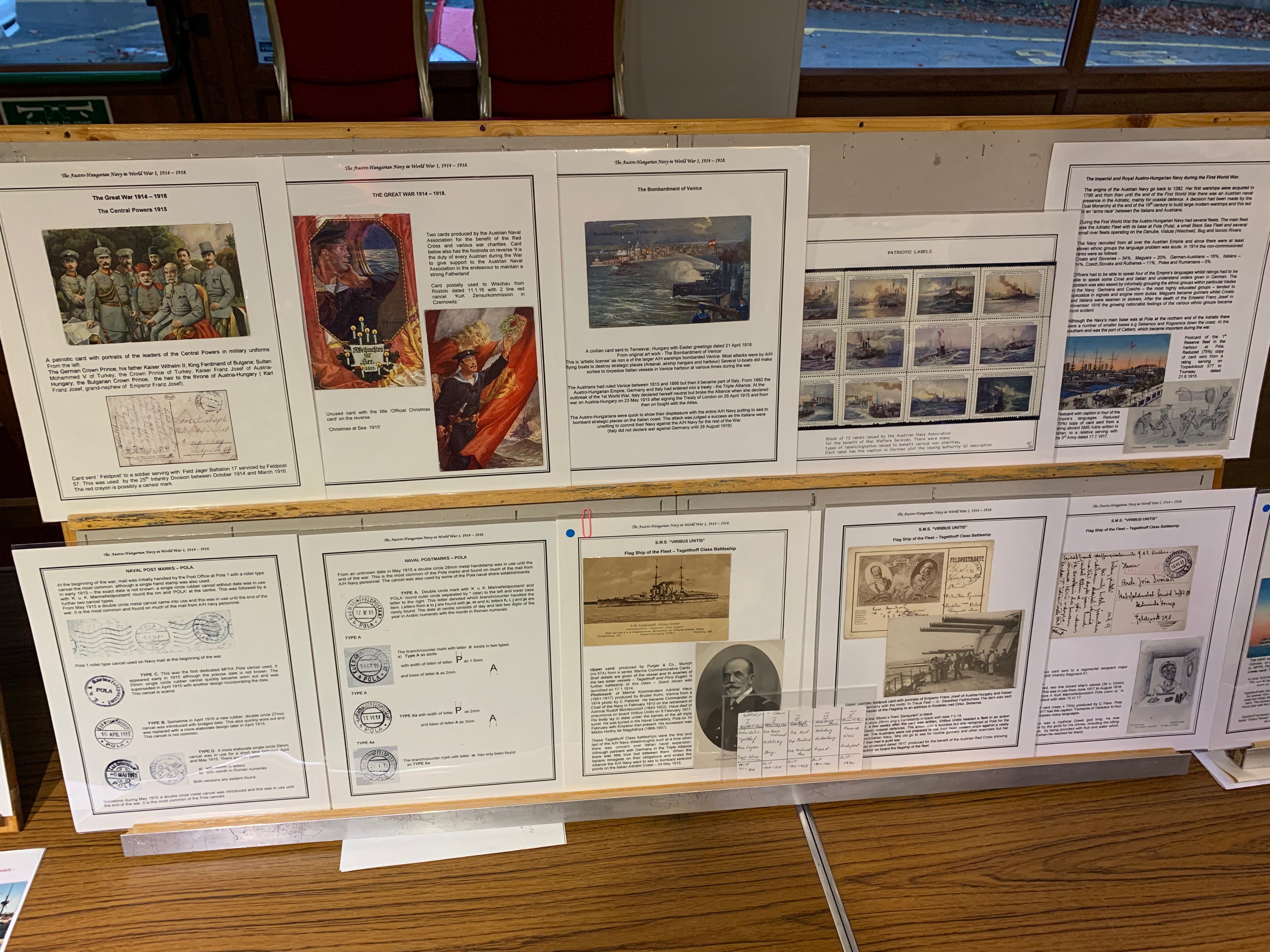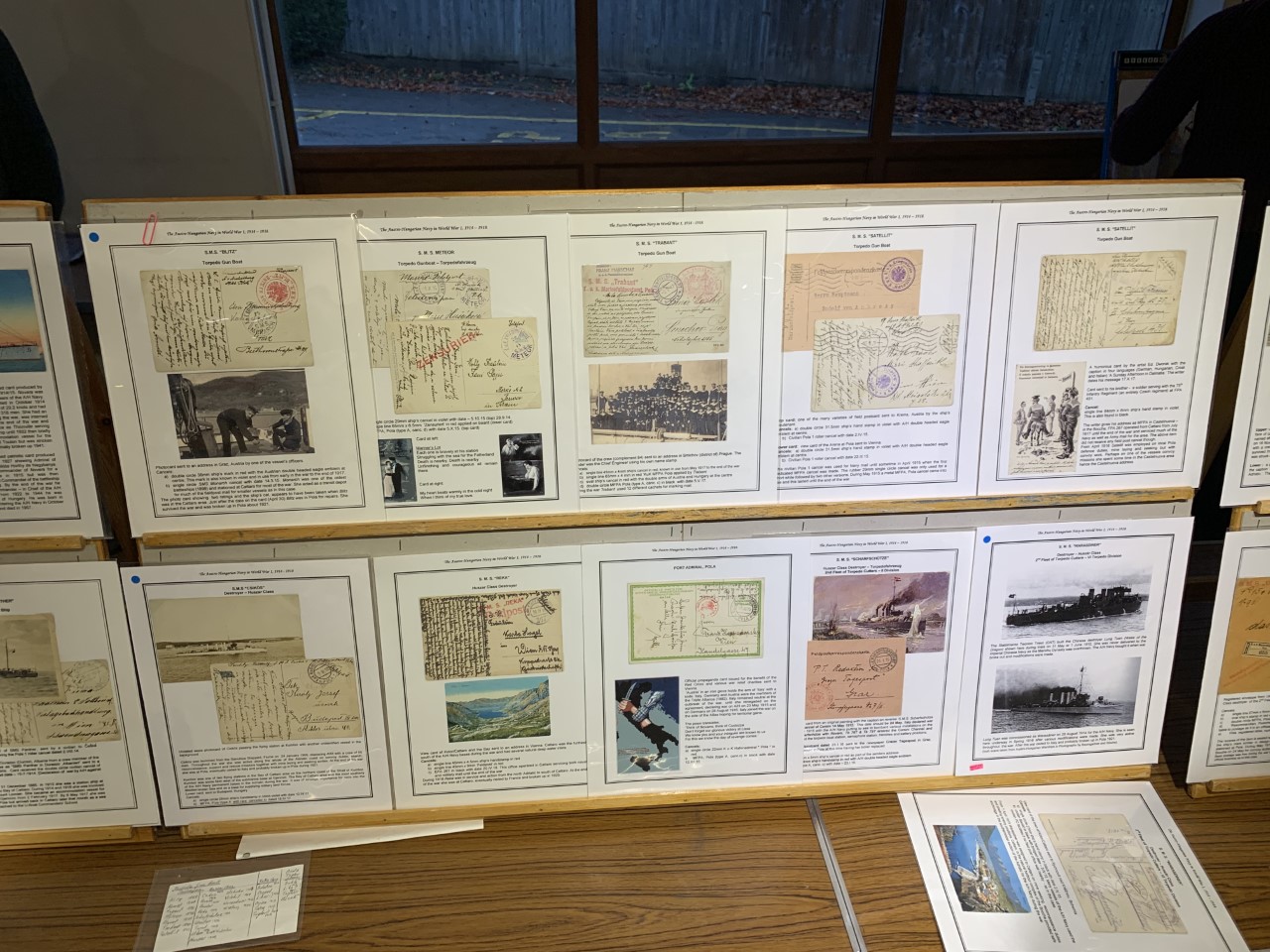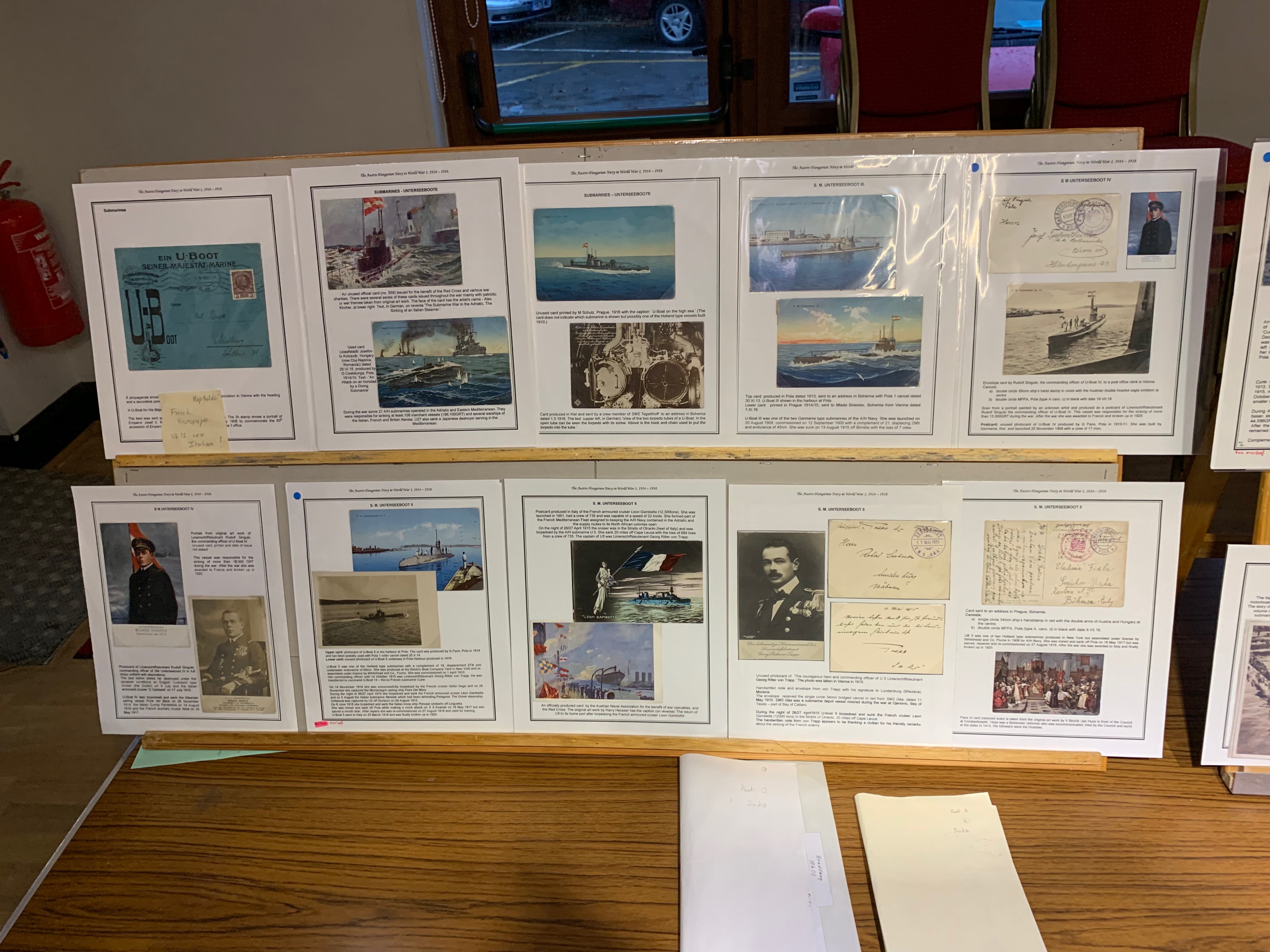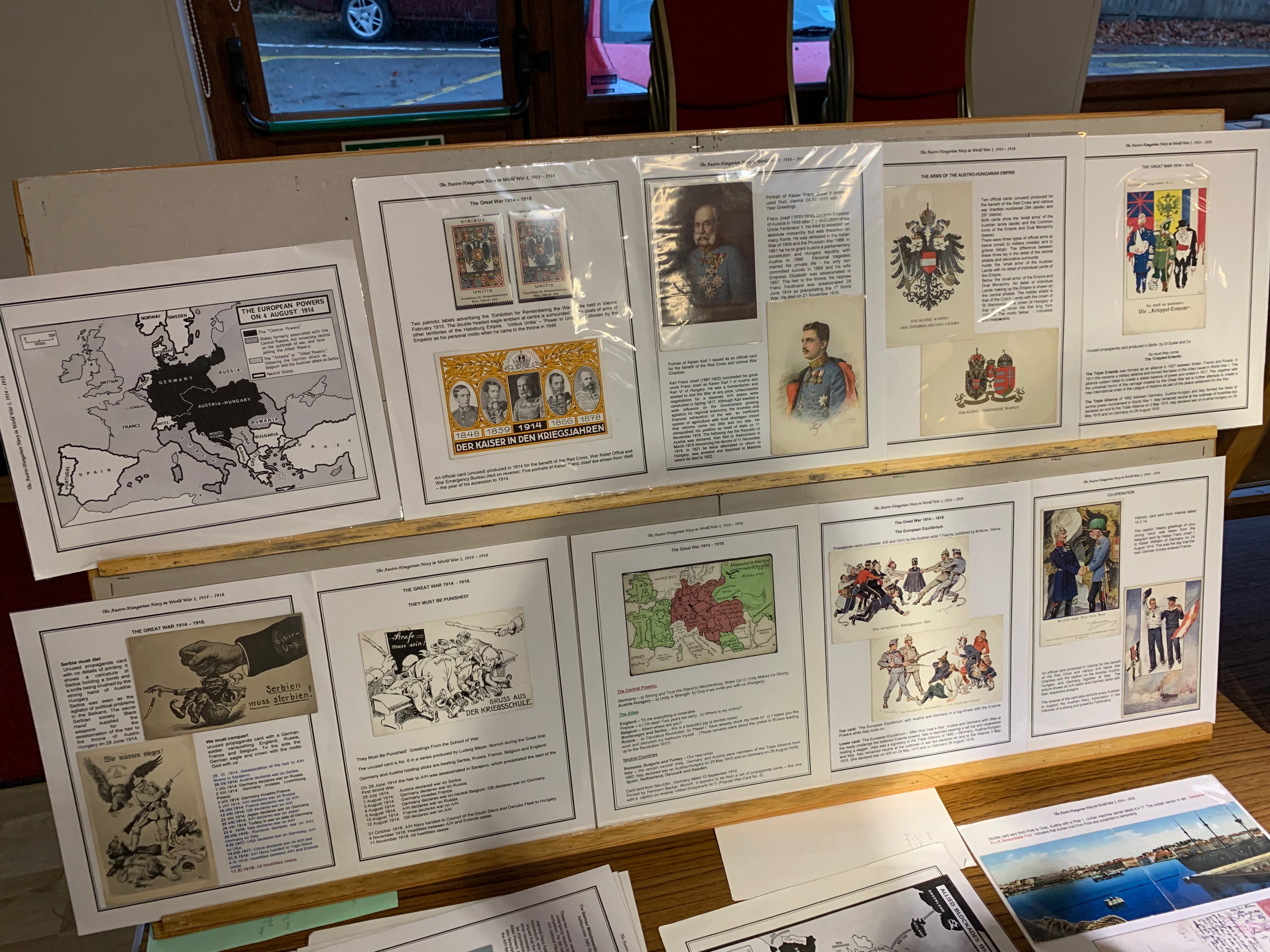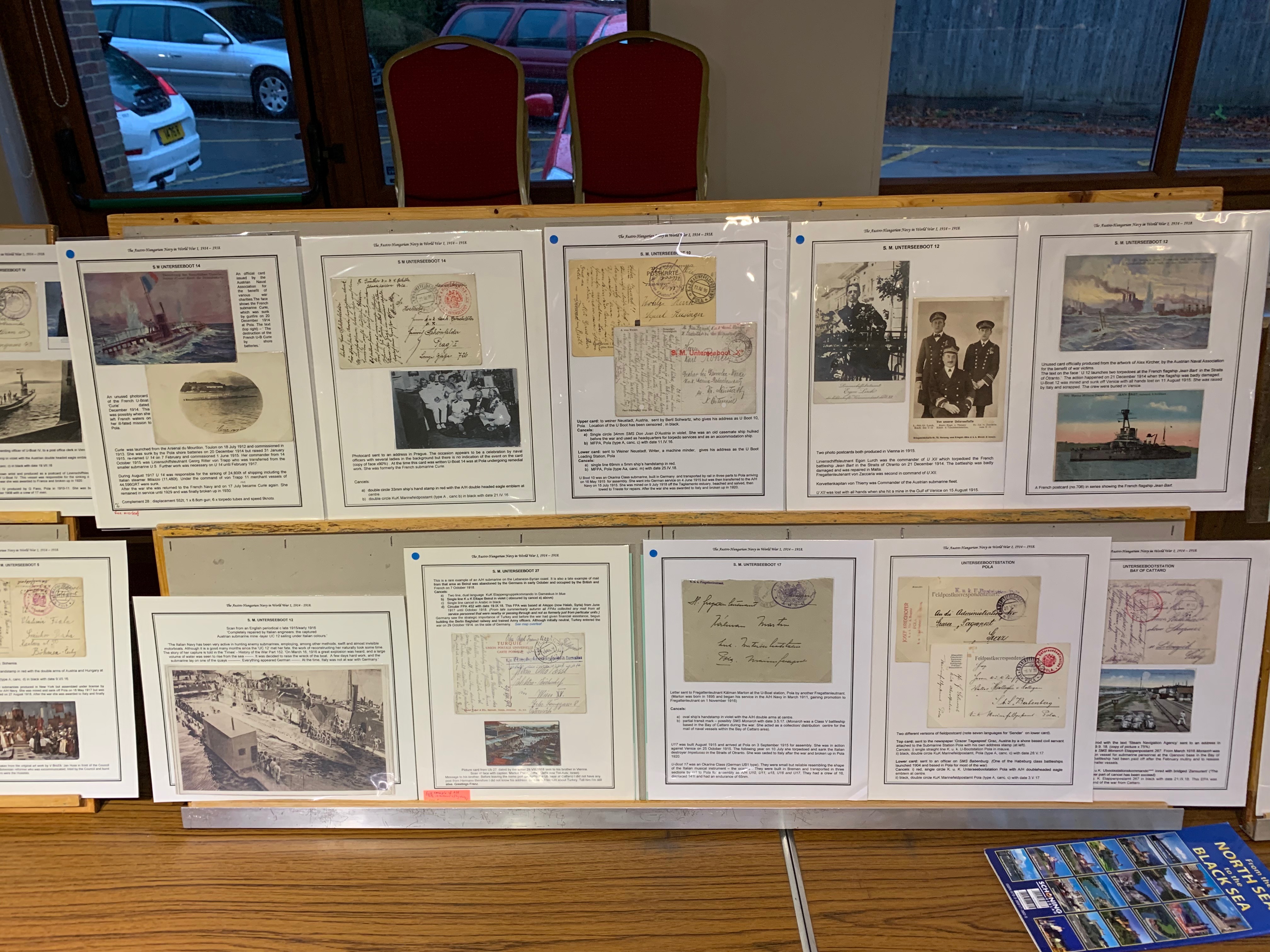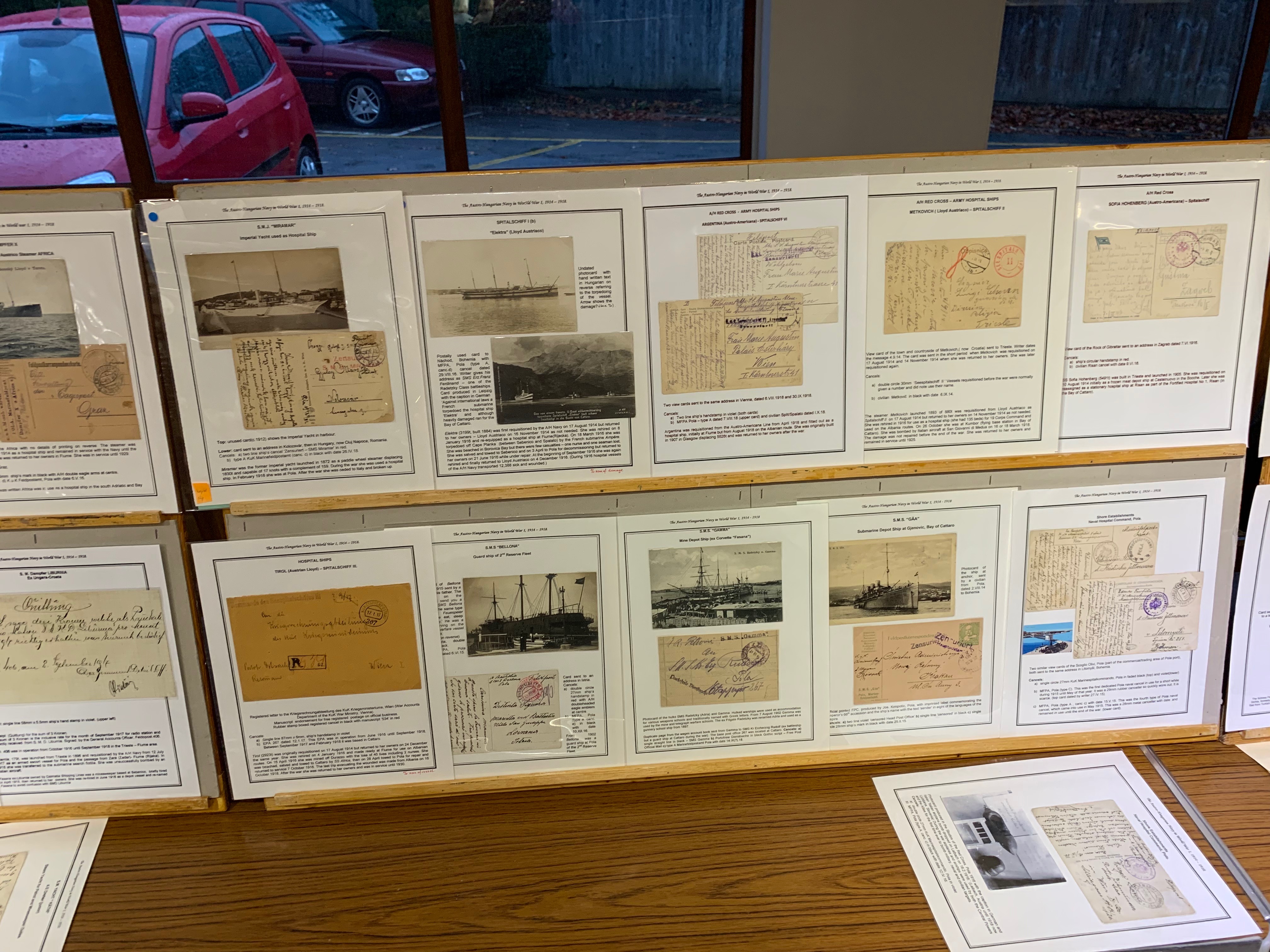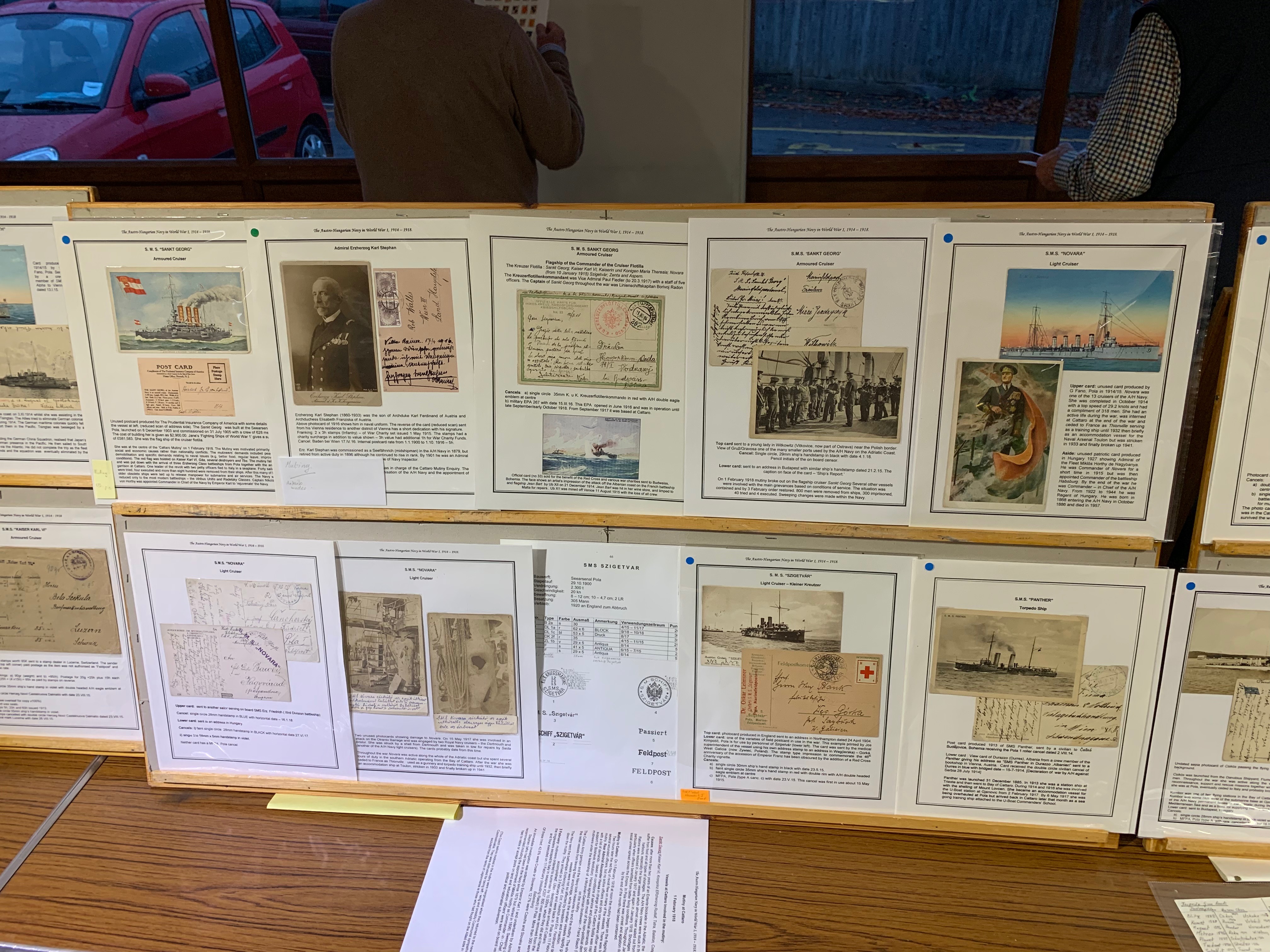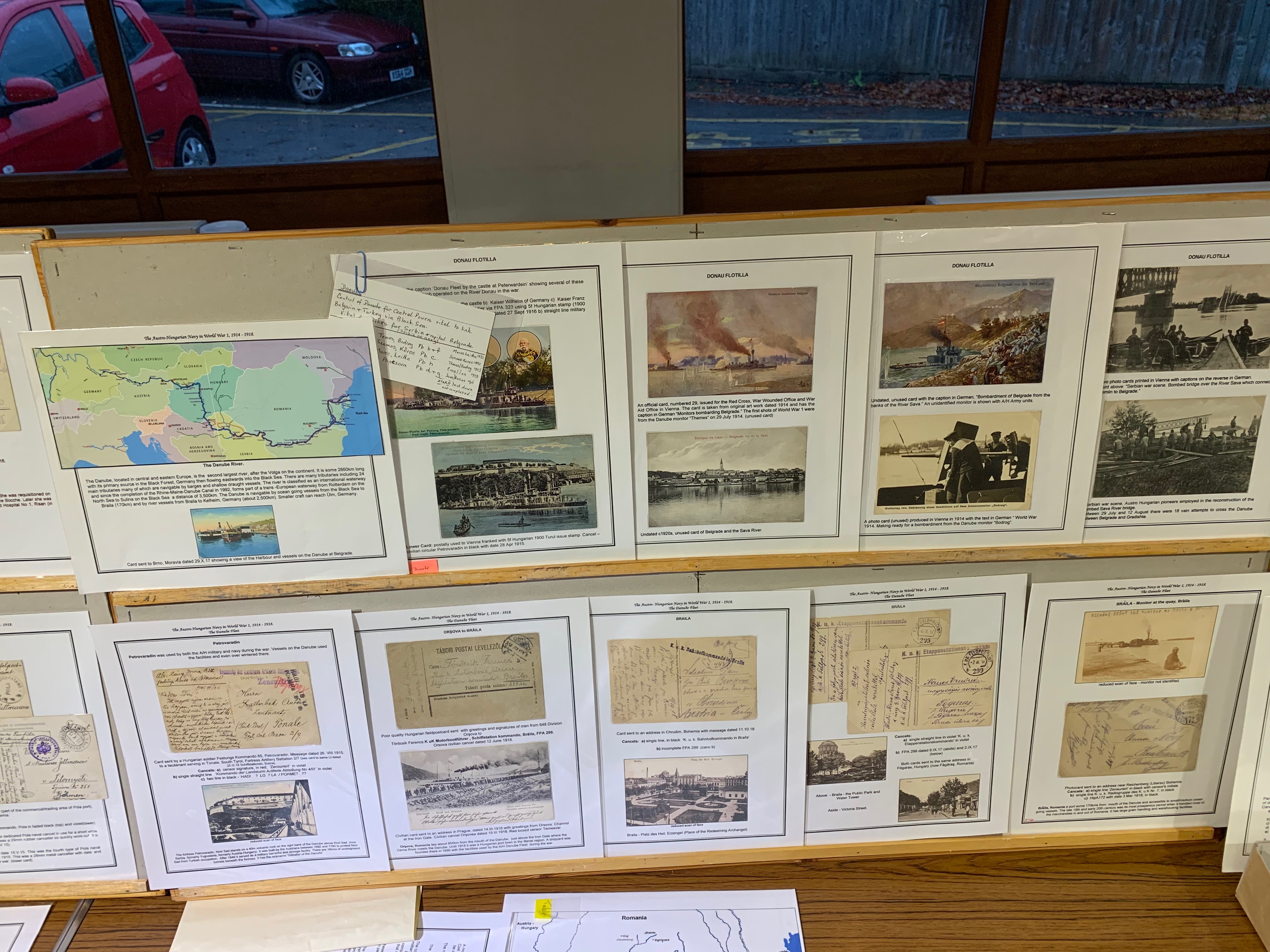Lindy Bosworth was our speaker in November and gave a superb display on the The Austro-Hungarian Navy in World War 1.
The display aimed to give an overview of the many vessels operative in the kaiserllche and kongliche Kreigsmarine (Imperial and Royal Navy) from 1914 until its abrupt demise in 1918. The Austrians acquired their first warships in the late 18th century. From then until the end of WW1 there had a naval presence in the Adriatic. The Navy’s main base was at Pola (Pula) on the Istrian peninsula but there were other bases along the coast with the most southerly at Cattaro (Kotor). During the war sailors of the Navy had free basic postage (registered and other services required payment). Initially the civilian post office at Pola handled the majority of mail but in March 1915 a specific Marine Field Post Office (MFPA) with its own cancel was set up. At first several types of rubber cancels were used then a steel cancel with date came into use until the end of the war. This cancel is the most common version.
Mail was censored on board each vessel before a ship’s handstamp was applied to authorise the item for posting. Each vessel had its own unique handstamp with many vessels having a variety of designs – one vessel had nearly 20 different designs. Some larger vessels also had their own printed field post cards. There were two collectors of these cachets serving in the navy - Captain Wutscher and Fregattenleutnant Buchburger. Only through their endeavours are some cachets of smaller vessels known.
The second half began with examples of the submarine fleet. Submarines made their first appearance as effective vessels of naval warfare during the 1st World War. The A/H Navy had 27 submarines and 6 were lost during the war. To service the Navy many other vessels were needed – colliers, water tenders, tugs, repair, hospital ships as well as shore establishments. Merchant vessels of all sizes were also requisitioned before and during the war. The A/H navy ceased to exist when Kaiser Karl handed over the entire Adriatic Fleet to the new nation of the Slovenes, Croats and Serbs (later Yugoslavia) on 31 October 1918. The Allies did not recognise the handing over and eventually vessels were allocated to the various Allies.
The Adriatic Fleet was not the only one of the A/H Navy. Other smaller fleets existed and the largest of these was the Danube Fleet. This first shots of the 1st World War were fired at Belgrade by two monitors Themes and Bodrog. These monitors were armoured flat bottomed, shallow draught vessels for use on rivers. The fleet had eight of these monitors with support vessels. Merchant vessels were also requisitioned to assist the fleet. Just as the Adriatic Fleet, each vessel had its own (or several) cachets to authorise forwarding of mail. At the end of the war Kaiser Karl authorised the handing of the Fleet to Hungary but again the Allies did not recognise this and eventually vessels were allocated amongst the Allies.
The Austro-Hungarian Navy exists no more but it is part of history and a fascinating and worthwhile topic to collect..
A fantastic collection and enthusiastically displayed by Lindy, a super afternoon.

